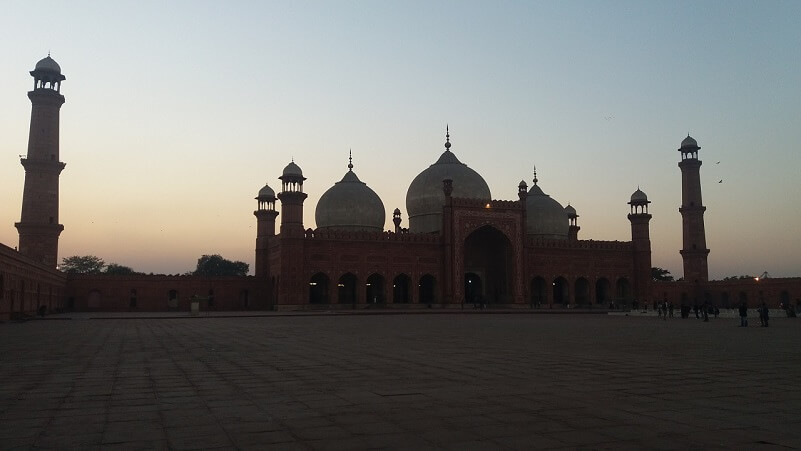
The Magnificent Badshahi Mosque Lahore of Mughal Era:
Lahore has beautiful gardens and elegant buildings of Mughal era. One of the most famous Mughal buildings is Badshahi Mosque. The mosque also houses the sacred relics belonging to Prophet Muhammad (PBUH) and his son in law Ali (PBUH). Now Badshahi Majid and Lahore Fort are the most famous tourist places of Pakistan. Shaikh Zayed Mosque UAE has architectural inspirations from Badshahi Mosque. Let’s view the magnificent Badshahi Mosque Lahore of Mughal era in detail.
Badshahi Masjid the most famous landmark of Lahore city:
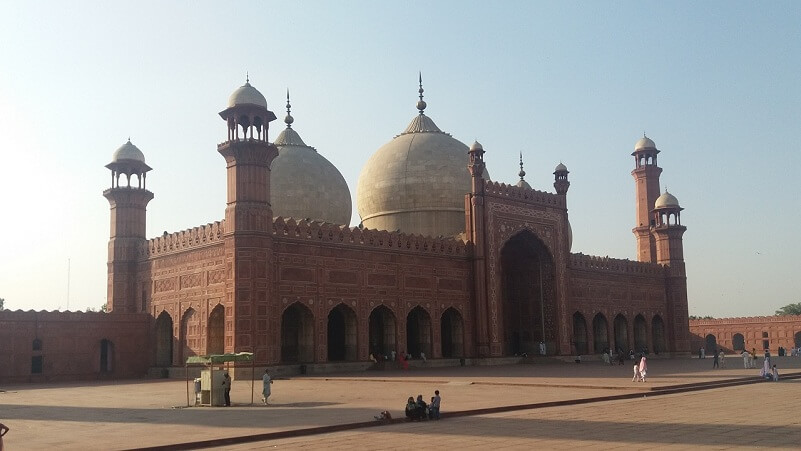
The Mughal Emperors decorated Lahore with many beautiful buildings and gardens like the Tomb of Jahangir, Masjid Wazir Khan, Lahore Fort, Walled City of Lahore and Badshahi Mosque. But Badshahi Masjid is the most beautiful and famous building of Lahore. Millions of tourists visit Badshahi masjid Lahore every year. It has also the distinction of being the most photographed landmark building of Pakistan. People love to hold their Nikkah Ceremonies in Badshahi Masjid to make the occasion very memorable.
Emperor Aurangzeb commissioned the largest Mosque of the World:
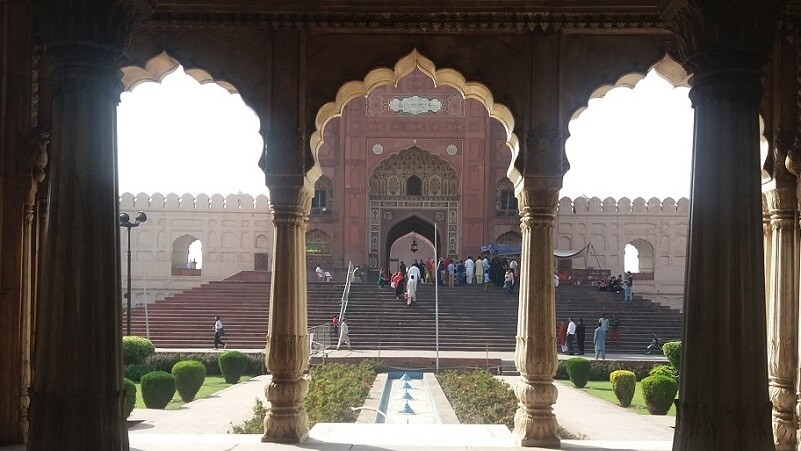
Lahore is the capital of the Punjab province since the Mughal times. The city was the center of the Islamic culture and learning. Therefore the 6th Mughal Emperor Aurangzeb Alamgir commissioned the magnificent mosque to be built in Lahore. As Alamngir commissioned the mosque so it is also known as Alamgiri Mosque. The construction work started in 1671 and the mosque was opened for public in 1673. It was the largest mosque of the world from 1673 to 1986.
Builder of Badshahi Mosque Lahore:
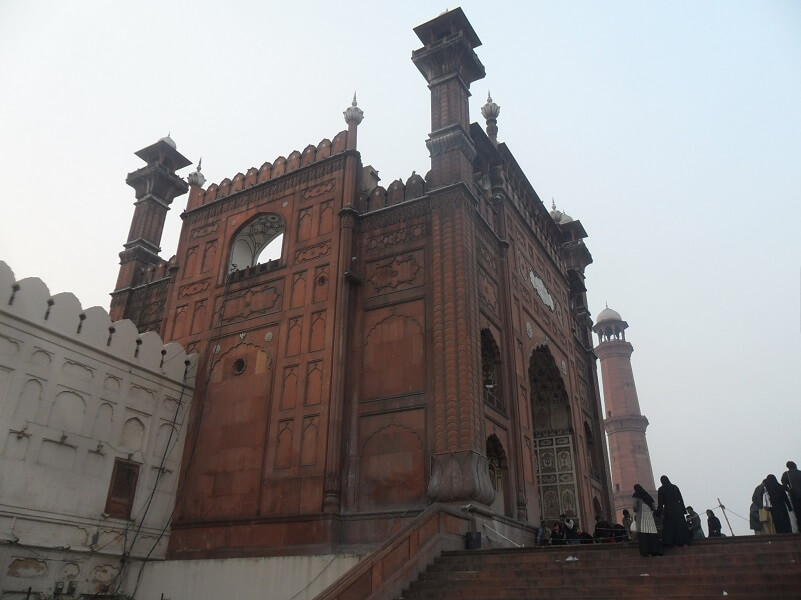
Architect or builder of Badshahi Masjid Lahore was Muzaffar Hussain also called as Nawab Fadai Khan Koka. Koka was also the imperial Master of the Ordinance. Muzaffar Hussain or Fadai Khan Koka was also the builder of many prestigious buildings like Pinjore Gardens Haryana India, Alamgiri Gate Lahore Fort Pakistan and Bibi Ka Maqbara in Aurangabad India. The name of the builder can also be read on the main gate of Badshahi Mosque.
Layout of Badshahi Masjid Lahore:
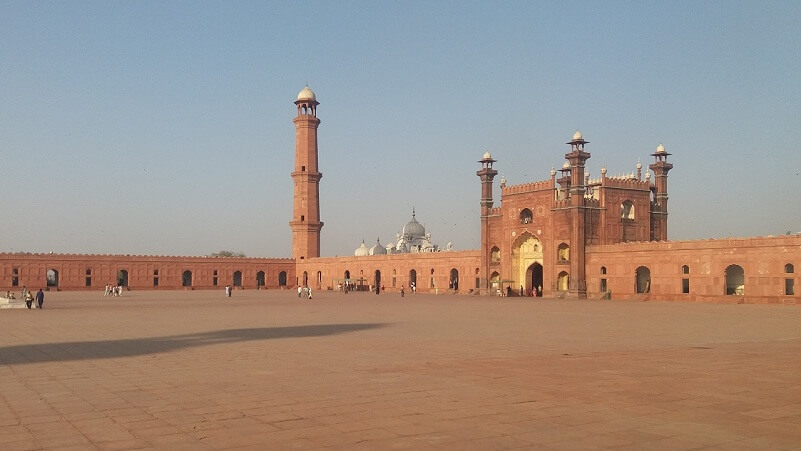
The layout of Badshahi Masjid is square in form. The magnificent gate is on the East side of the square whereas main prayer chamber is on the West side. There is a vast courtyard in the center of the mosque with a pond for ablution. The prayer chamber has four medium size minarets. Whereas four tall minarets are on each four corners of the mosque. On the North and South side are the chambers that were once used as hujras. Another ablution area is on the right side of the main entrance gate.
Decoration of Badshahi Mosque Lahore:
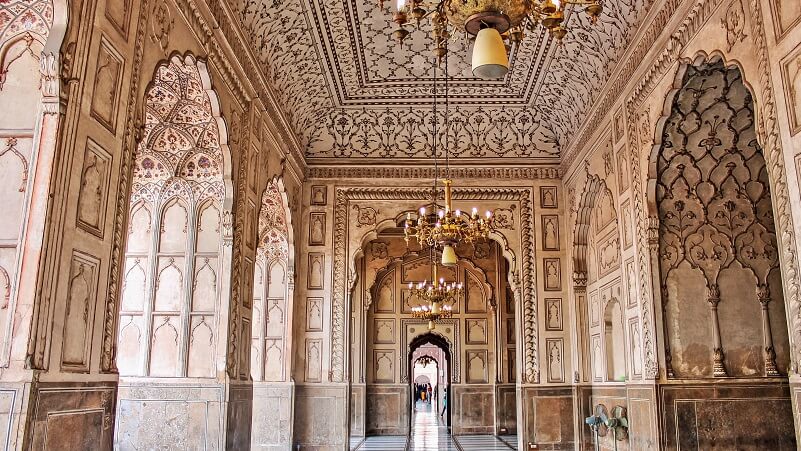
The structure of the mosque is built with red bricks. The exteriors of the mosque are clad with the famous red sandstone and white marble. The prayer chamber has beautiful three onion shape marble domes. The smallest dome is even larger than the famous dome of Taj Mahal. The canopies of the eight minarets are also made of the white marble. The interior of the main prayer chamber is decorated with the elaborate white marble carving of floral designs. The interior walls have beautiful Mughal frescoes.
Structural strength of Badshahi Masjid:
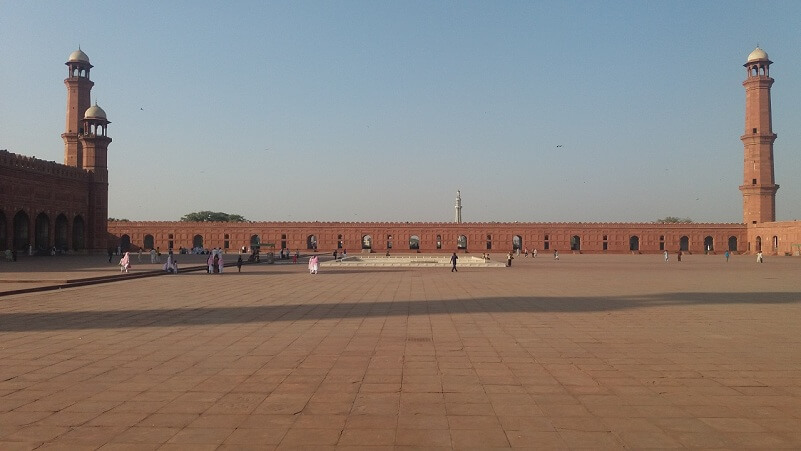
Badshahi Mosque has a strong structure as it withstood many attacks. During the Sikh Civil War of 1843, Sher Singh demolished the canopies of the minarets. He uplifted the heavy cannons on the top of the minarets to fire the Sikh Army in Lahore Fort. There were no cracks on the minarets due to the thrust from the firing cannons. This clearly shows the structural strength of the Badshahi Mosque.
Renovation of Badshahi Mosque:
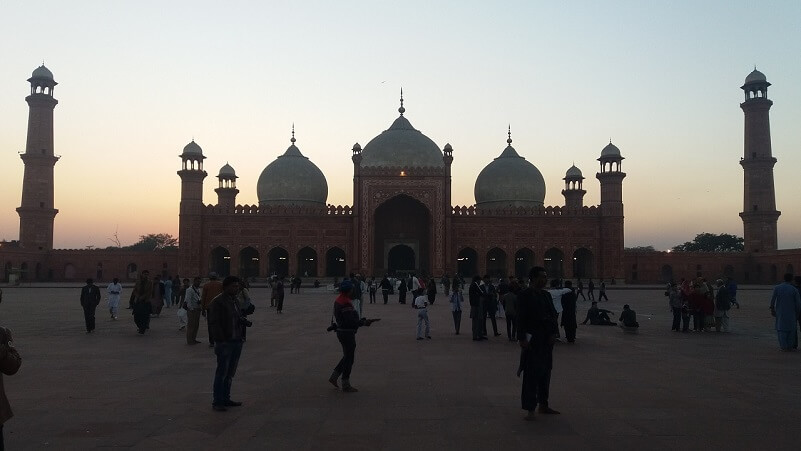
During the Indian War of Independence 1857, the British Government destroyed the front wall of Badshahi Mosque on fears that the mosque might be used as a garrison. In 1939 a committee was made to renovate the mosque to its original form. The renovation work included the construction of the front wall and canopies of the minarets. The renovation work completed in 2000 with the fixing of red sand stone floor in the central courtyard. Now Badshahi Mosque is fully restored to its original form.
